Plate Boundaries Quiz
1/23
Earn XP
Description and Tags
Name | Mastery | Learn | Test | Matching | Spaced |
|---|
No study sessions yet.
24 Terms
What causes the convection currents in the middle mantle that are responsible for moving the tectonic plates?
Heat from the earth's core and hot rocks rising and cool rocks sinking.
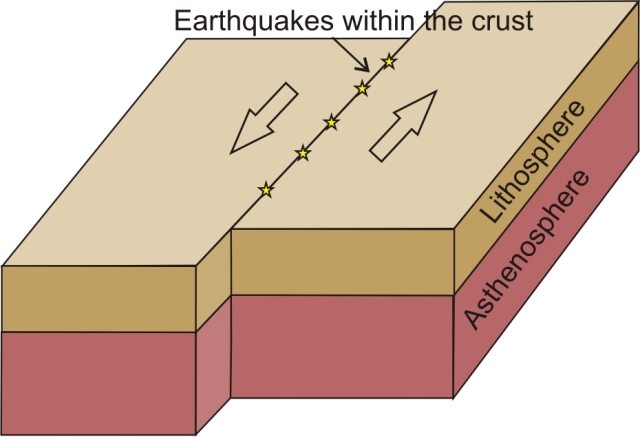
what boundary does the diagram below represent
transform
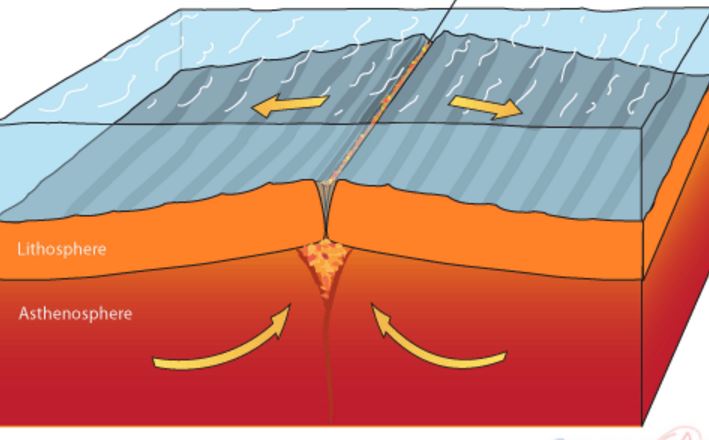
What type of boundary is represented below?
divergent
Plate boundaries are places where major geologic activity occurs. Volcanoes occur at convergent boundaries where the plates are…
colliding
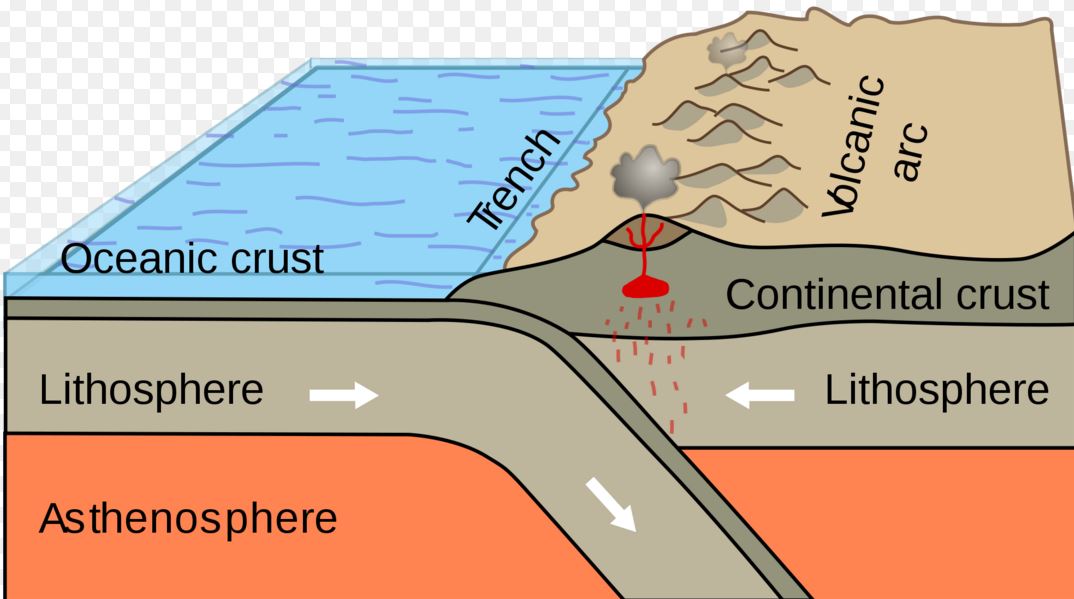
What type of boundary is represented below?
convergent
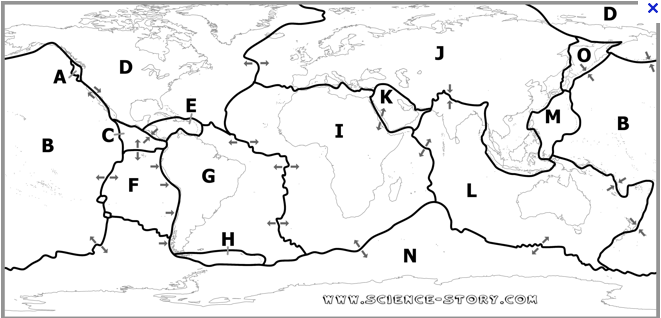
On the map above, what is the name of Plate D?
North American Plate
What can the movement of the tectonic plates cause?
Earthquakes, volcanoes, mountains, ocean trenches, rift valleys, mid-ocean ridges, island chains, continental drift, and tsunamis.
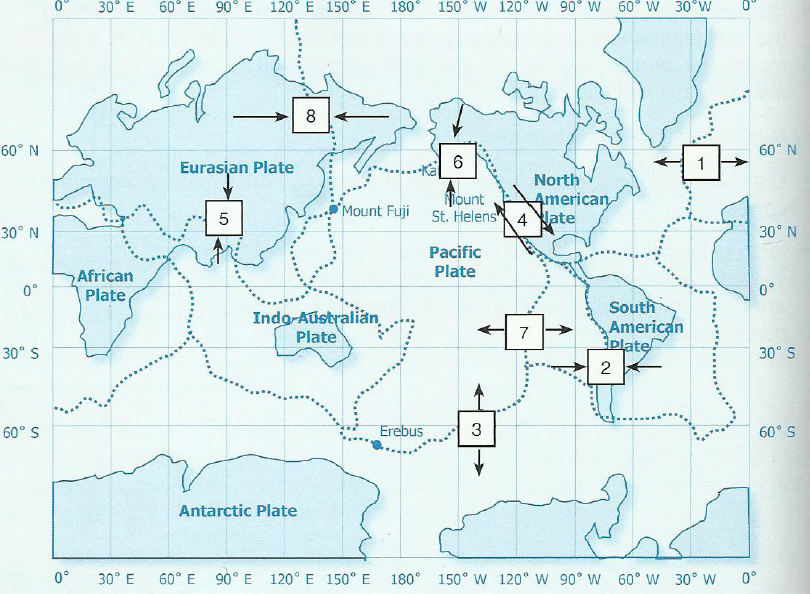
In the picture below, what kind of plate boundary is shown at #7?
divergent
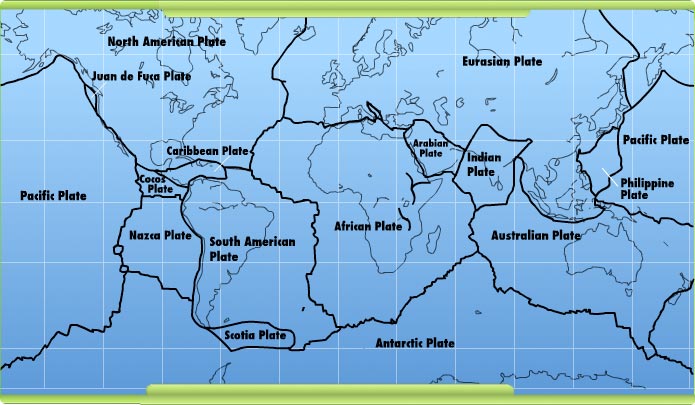
what will you find at the convergent boundary between the Indian plate (continental crust) and the Eurasian plate (continental crust)?
The Himalayas (Mt. Everest)
Which type of crust is most dense?
Oceanic
I am brand new crust. You will find me at this plate boundary?
divergent boundaries like the mid-Atlantic ridge
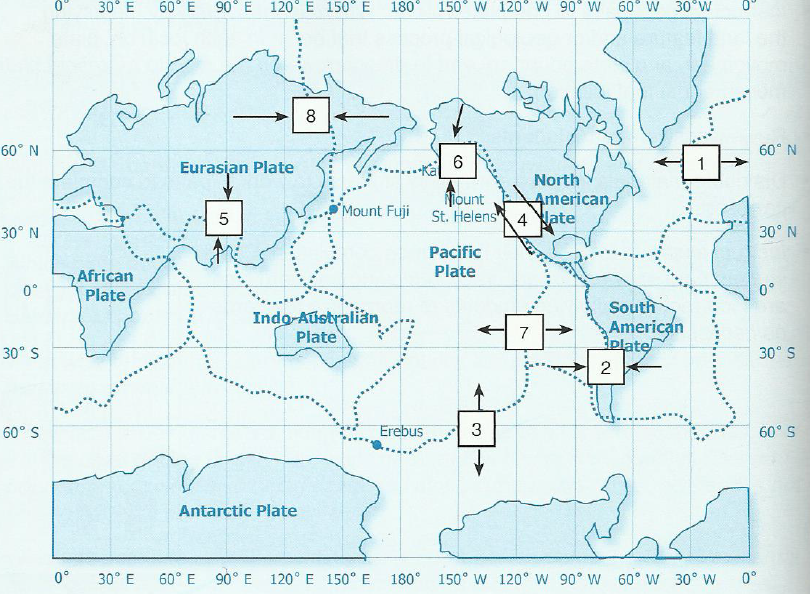
In the picture below, what will you find at #6?
Volcanoes
What happens when oceanic crust converges with continental crust?
The denser oceanic crust slides under the less dense continental crust.
Which of the following was NOT evidence that Alfred Wegener used to support his theory of continental drift (Pangaea)?
The convection currents in the mantle
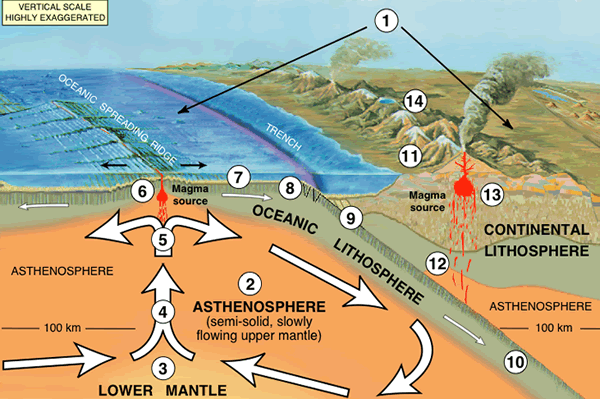
Looking at the picture below, what is causing #4?
Heat from the mantle is causing the rock to rise.
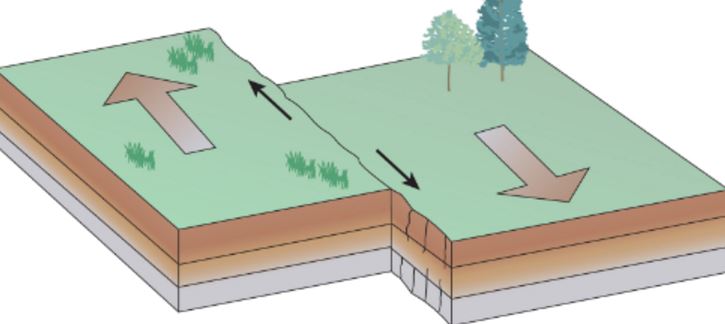
What occurs at this type of plate boundary?
earthquakes
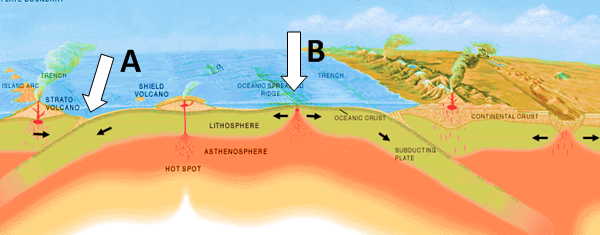
Which of the following is an example of a convergent boundary?
A
Iceland is unique in the fact that half of the island is on the Eurasian Plate moving East, and half is on the North American Plate moving away towards West. This is an example of a:
divergent boundary
Imagine that oceanic crust dives under continental crust and melts. 50 million years pass. What are you most likely to see form on the continental crust?
volcanoes
What is subduction?
is when one tectonic plate slides under another and sinks into the mantle.
It usually happens when an oceanic plate goes under a continental plate because it’s heavier.
At what type of boundary do you find trenches?
Oceanic + Continental =
Volcano + Trench
Oceanic + Oceanic =
Island volcanos + Trench
Continental + Continental =
Mountains